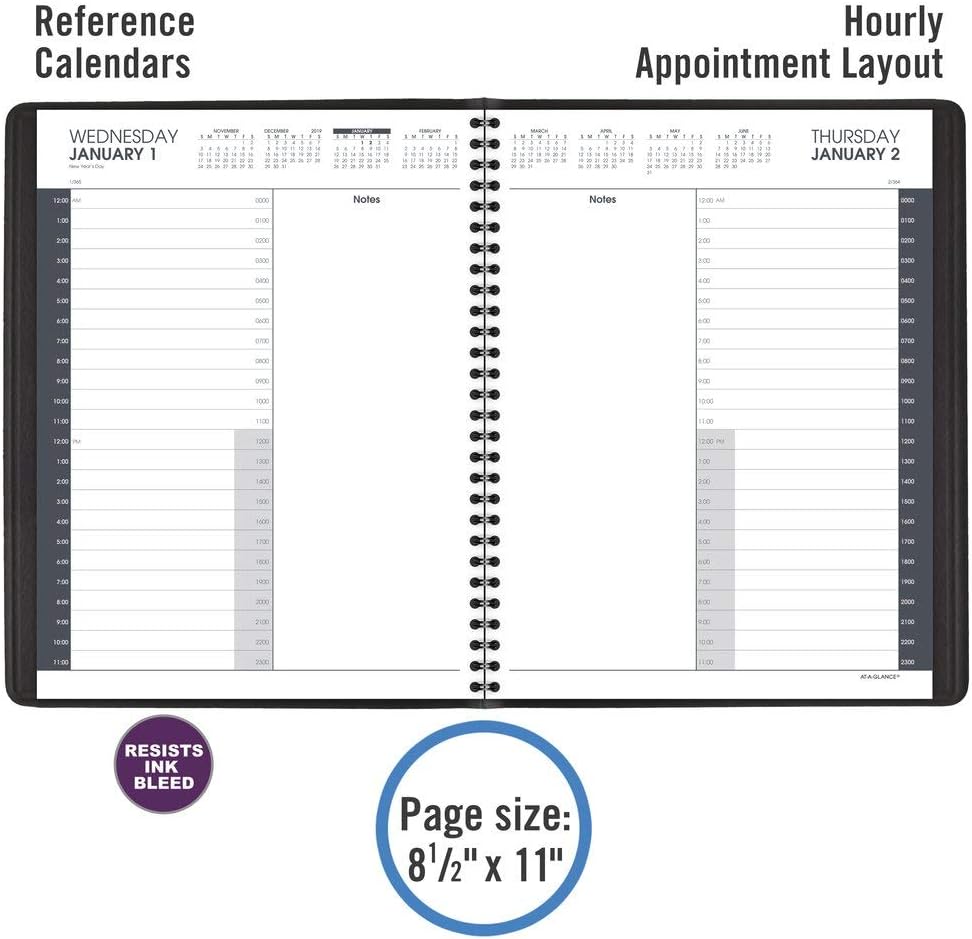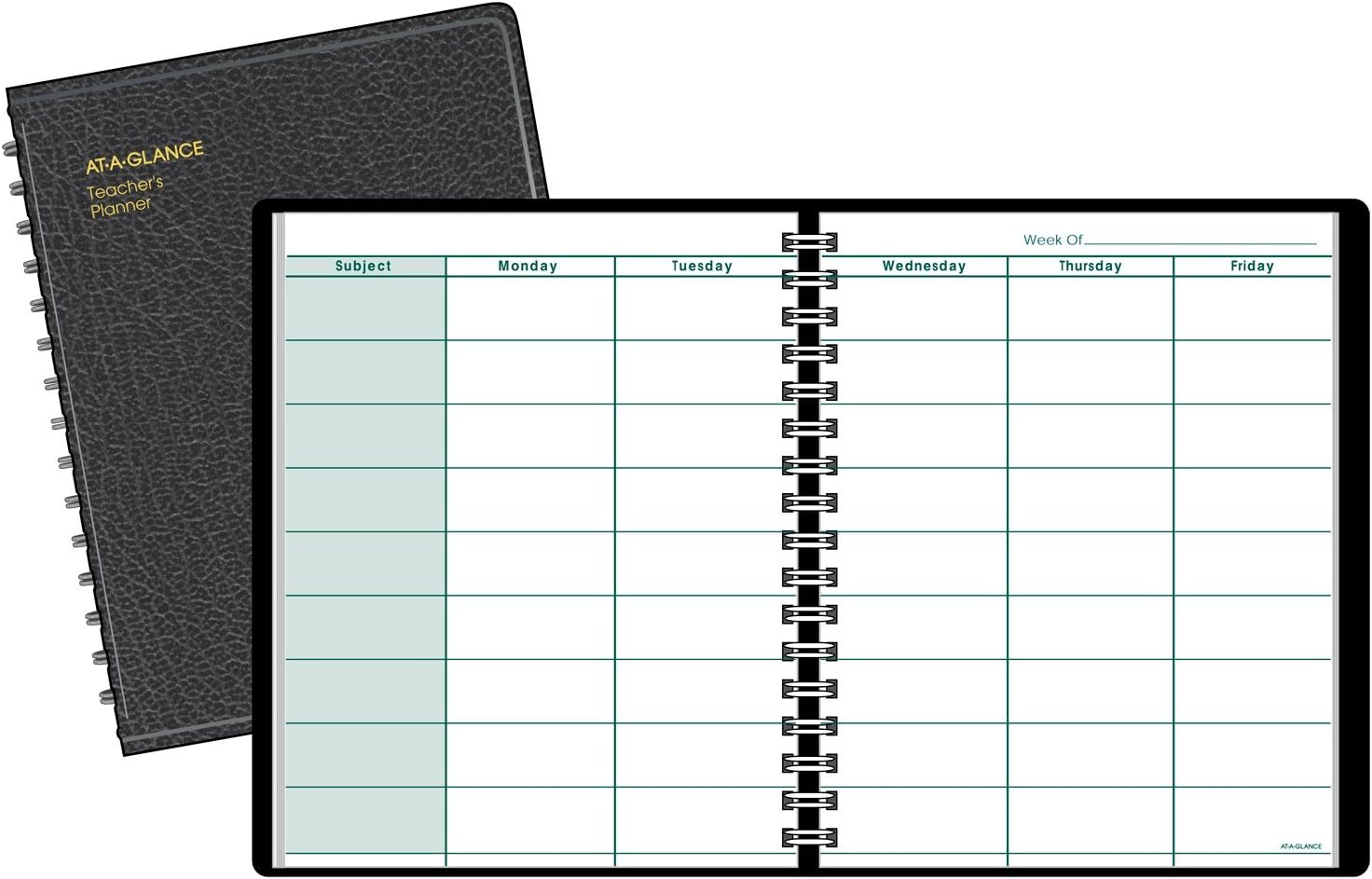Ok, here we go. A deep dive into planners!
Homeschooling most often takes place seven days a week, so all of the traditional teacher planbooks that go Monday-Friday aren't particularly helpful. Even if you want to think of school as five days a week, you might not pick Monday-Friday. When my girls were small we "did school" on Tuesday-Saturday so that my husband could come on field trips, like to Mount Vernon to watch the sheep shearing.
One option I recommend to people is the 24 x 7 plan book by At-a-Glance. It's wonderful! Every day, even Saturday and Sunday, has spaces for every hour and you can fill in every appointment day or night. Beside the tall column of appt. space is open space for Notes, where you can put your to-do list. Your scheduled homeschool activities (like dance class) can go on the appt. side and your remaining open-ended homeschool activities that don't have a set time can go on the Notes side.


The biggest downside to this lovely planner is the price. It is usually about $55.00. That's a lot for a homeschooling family on a tight budget. It's also a lot of notetaking space for Kindergarten -- as opposed to High School -- which doesn't usually have a lot of scheduled classes outside the home to attend.
So I've found an alternative that is much more financially reasonable, and even works well if you're working a traditional job while still homeschooling. The Green Plan Book by Carson Dellosa!


The Green Plan Book is the planbook I use when I'm teaching full-time during the school year at our homeschool co-op. I love that you can draw the lines wherever you want, depending on what works for you. Usually I have one side as the whole group lessons (early childhood, lower elementary, upper elementary, read aloud, etc.) and on the other side each child I teach gets his/her own column for one-on-one lesson notes and observations.
I got one of these planbooks for the summer, since I'm doing a few tutoring sessions each week and I also am continuing with Book Share and Science Club and SWI. I have space on the lefthand page to make notes on all of those sessions. The lefthand page is labeled Monday, Tuesday, Wednesday, Thursday, Friday (photo above).
However, on the right, there is just a blank grid (photo below). 10 columns. 5 rows. So I realized that I could rotate the grid and use that "unused" space in my plan book to make my notes for Zac!
That gives me seven days a week with some extra room to spare.
Perfect!
Now, the question of how to label the rows.
The answer is just DON'T.
I still agree with the early childhood notes I made so many years ago for Natalie, that the Kindy years should be thought of with the following "subjects": Music & Movement, Art, Nature, Cooking, Play, Handwork, Helping, and Stories.
BUT the traditional planbook falls short in two categories. Not including two days of the week when lots of school things happn. And making you feel like you should be doing something from each of those subjects every day. I well-remember when I had an eight subject planbook, the Teacher Planner from At-a-Glance.
For years I dutifully wrote in Music & Movement, Art, Nature, Cooking, Play, Handwork, Helping, and Stories. And then proceeded to feel guilty whenever any of the squares were blank, even though I knew full-well that doing 8 things a day for school is too much when you're five years old. It was a grid that made me completely miserable. Seeing those labeled -- but blank -- spaces was troubling my mind.
Now, this way I have only five squares a day and I find it much easier to deal with. Five things in a day is more than enough for any young child. Having the things be from any category I want is quite freeing! I feel immensely more relaxed planning this way. I know that every day is included. I know that every activity is included. And I know that I'm not going to overdo it!
Here are the things I have written in for this past week with Zac:
Riding his tricycle, playing in the rain, going for a walk, skipping around the block. Playing catch in the yard with our beanbag with the streamer tail. Blowing bubbles. Playing restaurant. Climbing trees together. Fort building.
Re-organizing and moving bedroom furniture, organizing dresser drawers. Decorating ant food journal with rubber ant stamp. Feeding ants lettuce leaf, apple bits, water drops. Making Pork Sausage Spaghetti Bolognese (chopping zucchini and garlic), Apple Crisp (chopping apples), and yogurt-parsley-mint Doggie Breath Freshener Treats (snipping, stirring, and ladling).
Finding the second bee swarm in our Bee Swarm box! Finding a bird nesting in the Window Nest Box! Finding a peach tree (unripe) and a mulberry tree (ripe). Enjoying dragonfruit.
Doing yoga. Attending Book Share. Kindness Curriculum lessons 13, 14, 15. Tinkergarten weekly activity (Empathy: Caring for Others) and making a Forest Buddy named "Volcano" from one of Natalie's old red & black socks.
And, of course, we read a LOT of picture books! Our bedtime chapter book read-aloud is The Adventures of Poor Ms. Quack by Thornton Burgess.
























This post contains affiliate links to materials I truly use for homeschooling. Qualifying purchases provide me with revenue. Thank you for your support!







































 Immersive Experience
Immersive Experience Immersive Experience
Immersive Experience